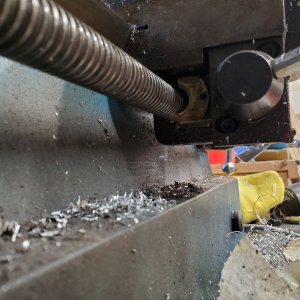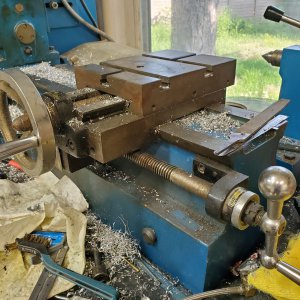I picked this up cheap, by modern standards, so I'm not too worried about its imperfections, but there's one glaring fault with this lathe(/mill/drill if you believe the marketing).
The carriage seems to be driven entirely be a single half nut.
The power feed turns the lead screw; the half nut engages or disengages with no "other half" to help out. When feeding manually, it's just turning a knob at the other end of the same lead screw. Pretty crude.
I'm wondering if anyone has recommendation on ways to improve this? I have a new nut on the way, which I'll machine down to replace the worn half nut on there (23 years and counting...), possibly with two halves so I can adjust backlash. I'm not keen on the absence of a back half, though.
The carriage seems to be driven entirely be a single half nut.
The power feed turns the lead screw; the half nut engages or disengages with no "other half" to help out. When feeding manually, it's just turning a knob at the other end of the same lead screw. Pretty crude.
I'm wondering if anyone has recommendation on ways to improve this? I have a new nut on the way, which I'll machine down to replace the worn half nut on there (23 years and counting...), possibly with two halves so I can adjust backlash. I'm not keen on the absence of a back half, though.



